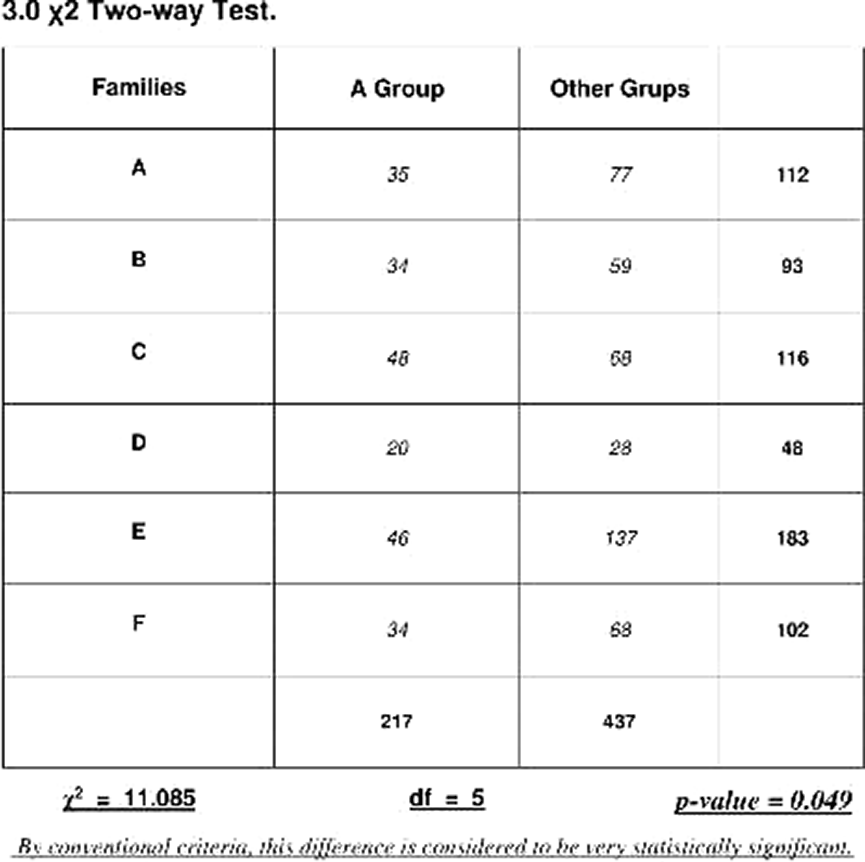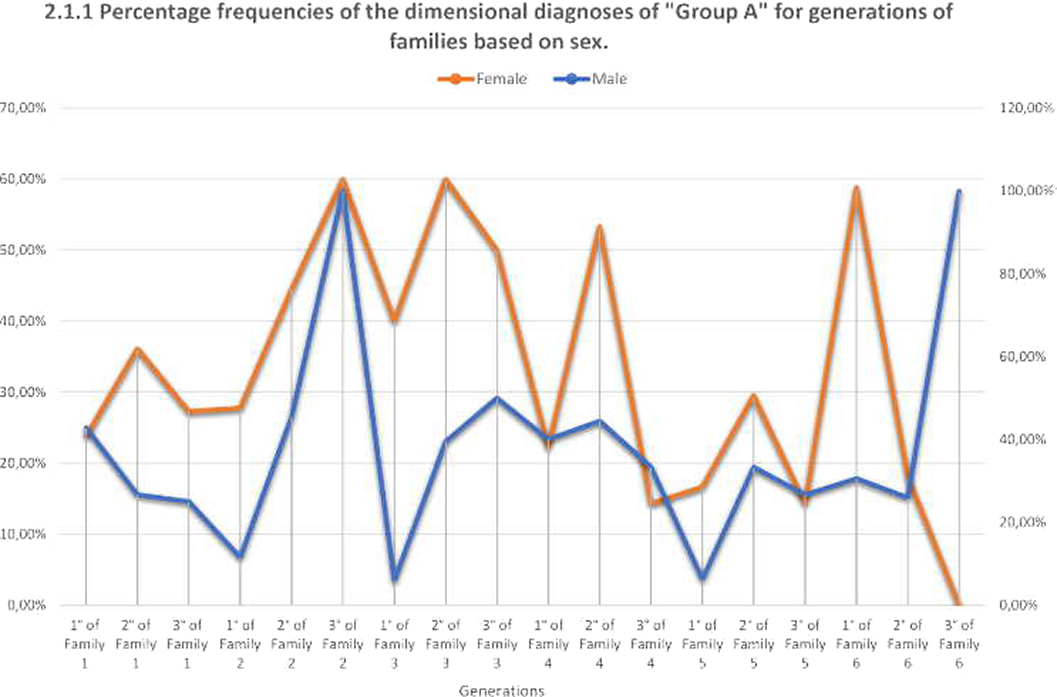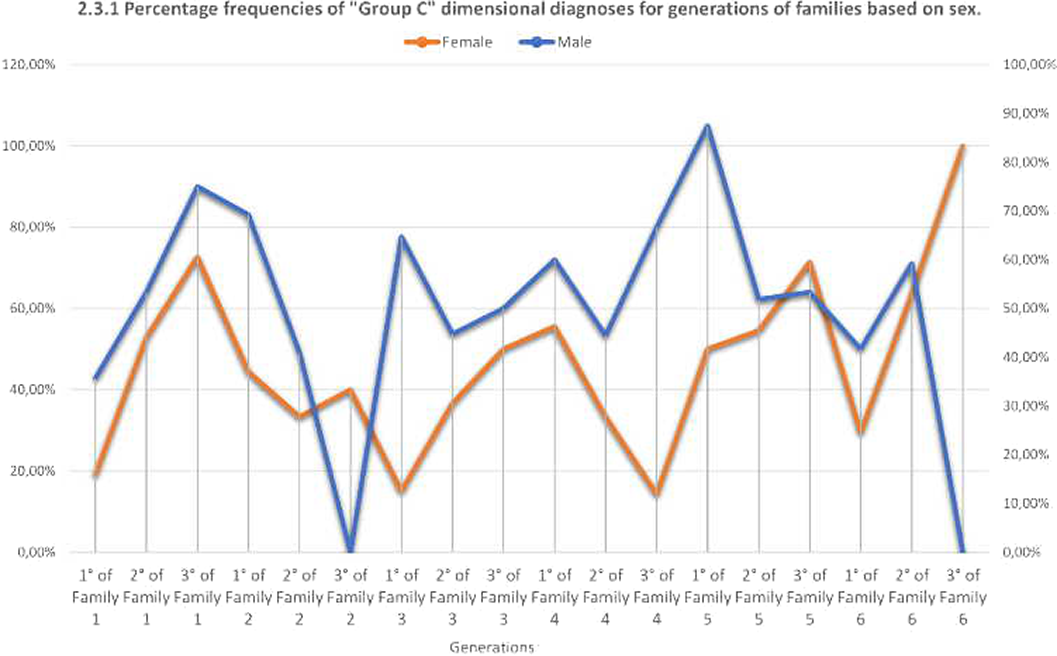No CrossRef data available.
Article contents
Local and exhaustive study of transmission of detected psychopathological dimensions in family groups in the “albanova” area
Published online by Cambridge University Press: 13 August 2021
Abstract
It is not known with certainty how different phenotypes are transmitted in groups of families divided into three generations.
Having meticulously searched for terms of psychopathogic lexicon that best translated the sterile categorical diagnosis, we obtained three dimensional groups for all six families in the three generations.
We calculated the frequencies and percentages of the three dimensional groups for the three generations of families based on sex.
The chi-square TEST attests a p-value = 0.049, statistically significant for the dimensional group “A”. (Tab. 3)
The genetics, and above all the epigenetics, of the phenotypes are periodically transmitted in group “A” and group “C” in the female and male sex. (Graphs 2.1.1 and 2.3.1) Different phenotypes indicate that the complexity of the interactions of the regulatory mechanisms of genes with the environment is extremely significant for the group with the most severe psychiatric pathology.

- Type
- Abstract
- Information
- European Psychiatry , Volume 64 , Special Issue S1: Abstracts of the 29th European Congress of Psychiatry , April 2021 , pp. S319 - S320
- Creative Commons
- This is an Open Access article, distributed under the terms of the Creative Commons Attribution licence (http://creativecommons.org/licenses/by/4.0/), which permits unrestricted re-use, distribution, and reproduction in any medium, provided the original work is properly cited.
- Copyright
- © The Author(s), 2021. Published by Cambridge University Press on behalf of the European Psychiatric Association



Comments
No Comments have been published for this article.